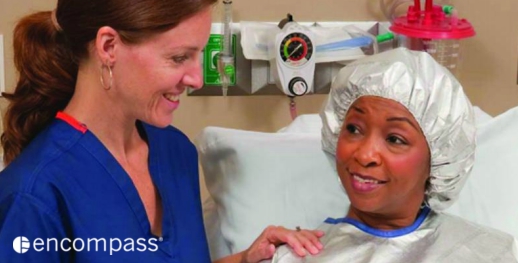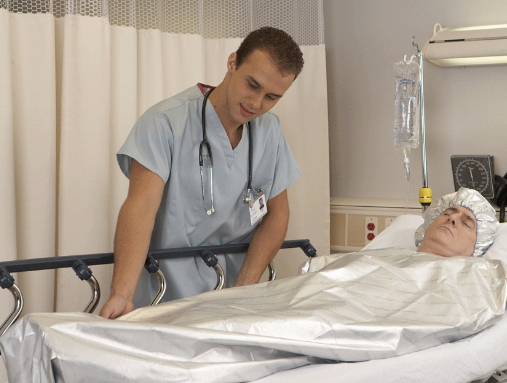
No matter the level of a surgical team’s experience, performing a procedure on a patient is a high-stress job, which can raise a surgeon or nurse’s temperature. For this reason, operating rooms are frequently kept cooler than other areas of a hospital or surgery center, so the hospital staff is comfortable while they work on patients.
The surgical staff may favor it, but what does a cooler environment mean for patients?
The Problem: Perioperative heat loss can be dangerous
Often, when patients receive a medical intervention that requires a surgical procedure, they are put under general anesthesia or even deep sedation. A patient's core temperature typically experiences a sharp fall during the first hour of anesthesia. This happens due to core-to-peripheral body heat distribution, meaning the body regulates by moving core heat from the trunk and head to the extremities. Anesthesia can potentially disrupt normal autonomic responses to a decrease in core body temperature, placing the patient at an increased risk of experiencing hypothermia.
When ORs are kept cooler to accommodate staff needs, it also adds to a patient’s risk for hypothermia, which is commonly experienced in these circumstances. When patients experience mild hypothermia, it triggers discomfort and can cause uncontrollable shivering. If the patient’s core body temperature isn’t brought back to normothermia and hypothermia becomes severe, it can lead cause adverse effects on patient recovery and outcomes. These complications may lead to the need for costly interventions, longer hospitalizations, or even death.

The Solution: Heat loss prevention
Just like many other medical concerns, prevention is a preferred solution. Hypothermia and the complications associated with it can be avoided by ensuring the patient is warm, and his or her core temperature maintains within normothermia limits through every perioperative phase: preoperative, intraoperative, and postoperative. Active warming, passive warming, or a combination can be used depending on the situation and the patient’s condition or overall health.
Draping multiple warmed cotton blankets over the patient during various perioperative phases is a conventional method of passive warming used in ORs across the industry. Some facilities even use this technique for prewarming, the warming of peripheral tissues or the skin surface before the patient’s procedure to reduce the amount of heat loss during the first hour of anesthesia.
Thermoflect® reduces the need for warmed cotton blankets
Thermoflect® Heat Reflective Technology® is a simple, science-based, safe, and effective pre-warming protocol that maintains normothermia and prevents hypothermia. It has been trusted by clinicians nationwide for over 20 years to protect at-risk patients from the serious adverse events associated with unplanned hypothermia.
Without electricity, the NASA pioneered material reflects a patient's radiant heat, preserving it in the body's core. When the environment, or room, around the patient is cooler, Thermoflect® products also prevent convective heat loss or wind chill. Inside, the material is lined with a soft, patient-friendly surface to help maintain patient comfort during use.
The Reston Medical Center conducted a feasibility study to determine whether a thermal reflective blanket plus one warmed cotton blanket provides better temperature control and thermal comfort than warmed cotton blankets only. The study, published in the October AORN Journal, concluded that the "use of thermal reflective blankets led to significantly reduced use of warmed cotton blankets."
In short, Thermoflect® blankets will dramatically decrease cotton blanket expenses in your OR.
Encompass Group offers a wide range of hypothermia prevention products. Call 1-800-284-4540 or email me today to learn more about this cost-effective, safe solution to keep your patients safe and comfortable.

